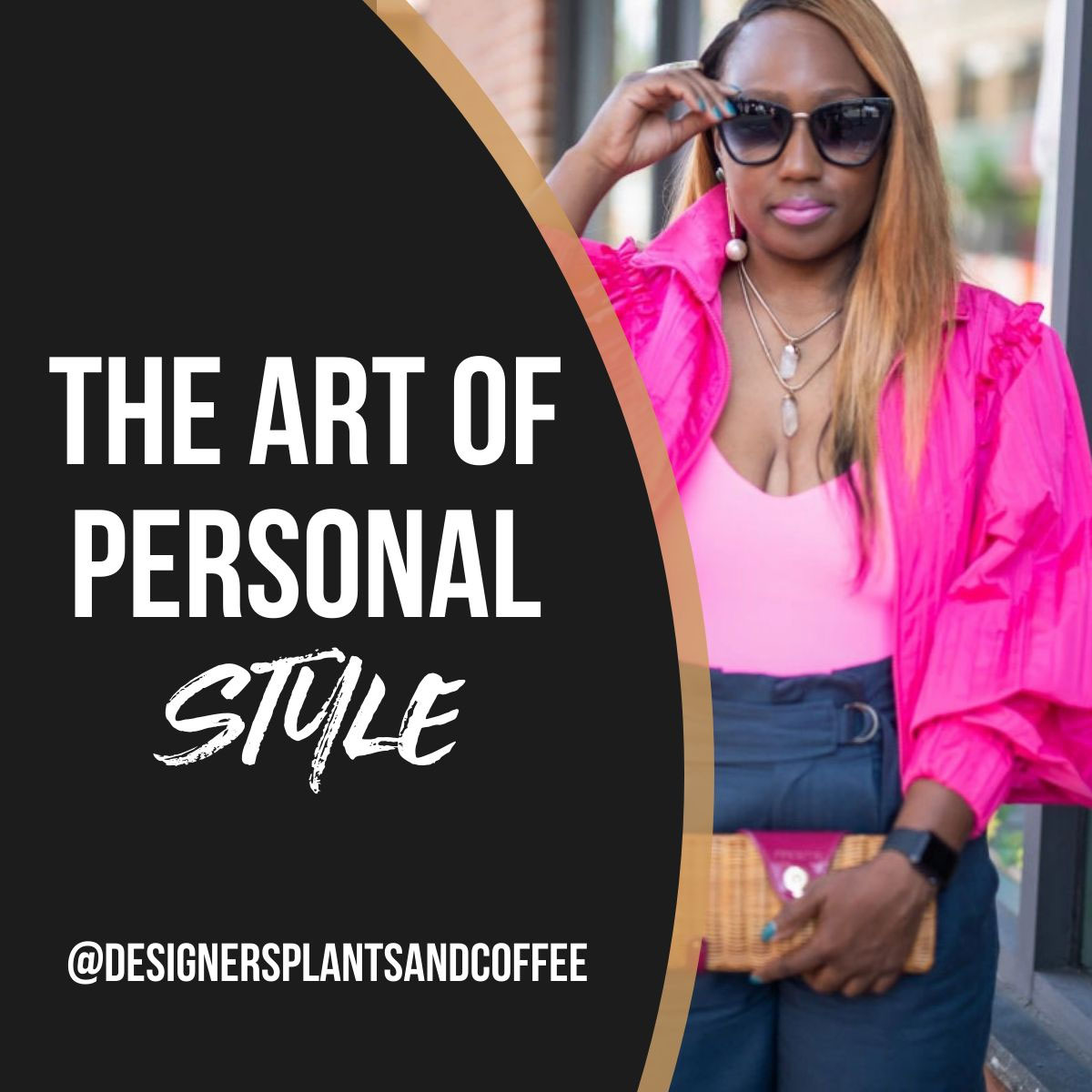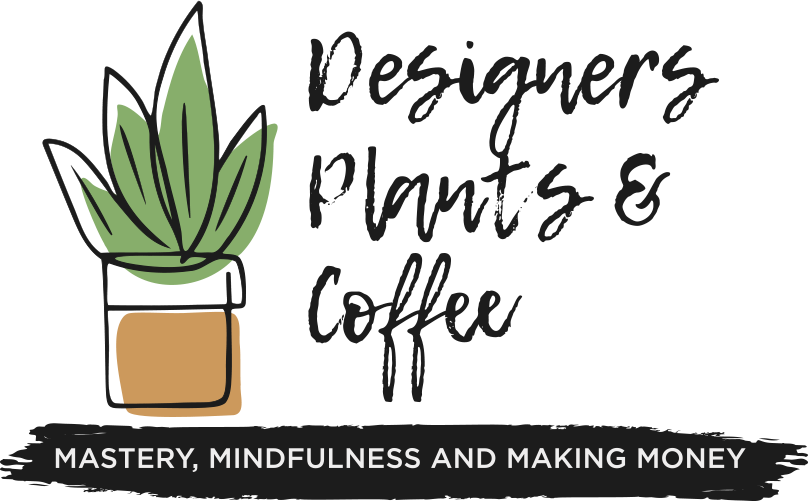

We welcome Hasanna to the DPC podcast, a fashion enthusiast turned corporate buyer, who shares insights into the fashion industry. She emphasizes the importance of understanding fashion as an art form beyond just shopping and aims to guide others through personal styling and wardrobe education online.
Key Points Discussed:
Key Takeaways:
This episode provides valuable insights for fashion enthusiasts looking to navigate the industry, express their style effectively, and build a wardrobe that suits their lifestyle.
We want to hear from you! If this episode inspired you in anyway take a screen shot of you listening on your device and post it to your Instagram stories and tag us, @designersplantsandcoffee and @the_elephant_in_a_pink_room
Links from this episode:
When I go to work, you all just don’t know. I be literally throwing stuff on. But I have created a wardrobe that’s cohesive. Anything could go with anything.
Welcome to the Designers Plants & Coffee podcast, where we discuss how to succeed as a designer while staying true to yourself, finding peace in the process, and making money doing what we love. Subscribe on YouTube and wherever you get your podcast.
Welcome to Hasanna. She is a fashion enthusiast and wardrobe educator and creator of the elephant in a pink room.
So we have to ask, how did the name come about?
I don’t It just came to me at the bar, literally. I had to go in my pocketbook and get my drinks and write it down. So the concept being an outsider, right? But you’re very noticeable. People notice you as soon as you walk in a room, but it’s obvious that you are not supposed to be there.
What are you doing with the elephant in the pink room?
Let’s start from the beginning. Initially, I started out in the stores, quickly got into management. But then after a while, that is weird and teared on you. I had to start thinking long term And I was like, I love fashion. I love business. So I thought like, oh, it should be easy for me to transition into corporate from the store, which to my surprise, that was the case. I went back to school, got my degree in fashion marketing management. And then once I transition into corporate, you start to understand that it’s not really the fashion that everybody thinks that it is. The retail side of the business is different actual art of fashion. And I’m in buying now, so I know I’m a born creative, so I had to find a way to still be able to create. Because I did visual merchandising for a while also, but I love styling, love merchandising. So that’s when I decided to do the blog. And so right now, I’m trying to expand all of the platforms that I have. But to more focus on personal styling, wardrobe, education. It’s cute to put outfits together on myself, but I have so much experience and knowledge Which in the industry.
So now I’m trying to correlate in that onto the online space to be able to help other people understand the actual… Because when you talk to people that think that they’re into fashion and they just really ignorant to what fashion really is. So there’s a lot of mised education out there. And I don’t think that people really understand the art of fashion. They understand the shopping and the buying clothes, but it’s so much more to it than just that. And I like to focus on maximizing your wardrobe and personal style. So That’s the more of my angle.
What is your job as a buyer?
It’s more analyzing. You have to know your business. You need to know your customer. You need to do market research. The gag of it is that you have to really make sure that what you’re bringing in is going to bring in dollars. So that’s why the business part of it is so much more important, because if you don’t know your business, your customer could hate pink like me, and then you got a whole bunch of pink in your soil. They’re looking for blue or It’s like, I’m not popping this shit. Those are things that you have to know. Pricing is important. You have to be able to negotiate prices. You have to know what your competitors are selling. Now it’s January. My mind is instantly thinking spring. How could you forecast the business so far in advance. It’s not as pretty as people. Sometimes you don’t look at clothes at all. You’re looking at cats all day, or you’re just literally looking at your reports.
For people who don’t know what a CAD is, a CAD is basically a sketch of design in colorways. Instead of having the actual sample, the designer puts it on a CAD, and that’s a Bible for developing a tech pack, customers, everything. Sometimes you don’t get the sample, you work from CADs is what you’re saying.
Yeah. Then it depends on if it’s stock product or if it has to be cut. If it has to be cut, a lot of vendors, they don’t really want to cut it until you could promise them a certain amount of units. The wild thing is you could look at the CAD and get the sample, and it’s completely different. But when you’re working for a company that rely on other people’s tech packs and all this, it’s just a mess. That’s why you’ll have some stores that the sizing is so off because they just grabbing stuff.
You talked about the personal style and giving people a better understanding of personal style. Would you have clients to teach on that that you would do?
I mean, yes, because styling is one of my passions, so that is something that I do. But I to focus more on personal style as well, even through education, through social media and things like that, because I feel like that’s also misunderstood. Because not everybody is into fashion. Not everyone loves clothes, but you still got to go outside and be dressed. I think that everyone still has an image that they want to portray. So that’s why personal style is important. I think sometimes when we think of personal style, they think of overly dressed. But no, it’s more to it. It’s more about showcasing who you are on outside. The way that you dress will match your personality. The first impression is everything, right? What we have to understand is that people automatically will cast a judgment on you based on how you look. I just think that it’s important because it also gives you confidence. It gives you confidence once you know who you are. It helps men that personality and that confidence to me. That’s what I believe.
Say I’m mid-20s and I want to get out of my college, teenage style. How would How do you recommend I go about defining what my personal style is?
What do I like? Start to think about what you want to wear, how you want to look, and then also having someone, like you say, example of a mood board. Sometimes it could be a collage of different people with completely different styles, but you could mesh it together to make your own. But I think that number one is understanding how you want to be portrayed to the world. I tried to get out of buying anything, like in-pull shopping. You out, you just picking stuff up. I’m more strategic with my shopping now, too. And when developing a personal style, that’s important to be strategic, to make sure you have your basics first, and then you start to venture out into the trends and other things like that. But you always want to have an idea of what you need and what you want.
When I think about personal style also is also what you feel good in, you’re being complimented on, and how you feel in it. I mean, that can also determine your personal style.
And also your lifestyle is important, too. Let’s be real. Some things you just can’t wear on everything that have to do. So that is important. So it’s a lot of factors that go into personal styling as opposed to just going shopping. You have to make sure that it makes sense. Focus on having a functional closet. When I go to work, you all just don’t know. I be literally throwing stuff on. But I have created a wardrobe that’s cohesive. Anything could go with anything. That’s it for us.
I’m Zahir from Cover Me Sheet.
I’m LaCisha Weston of Keeping You With Stitches.
Naima Doja from Fearless Threads.
I am Hassana from The Elephant in a Pink Room.
I I’ll see you next time.
Subscribe to our newsletter with stories from our experience in the fashion industry and the best design tips.

We publish bi-weekly on Friday’s at 7am.